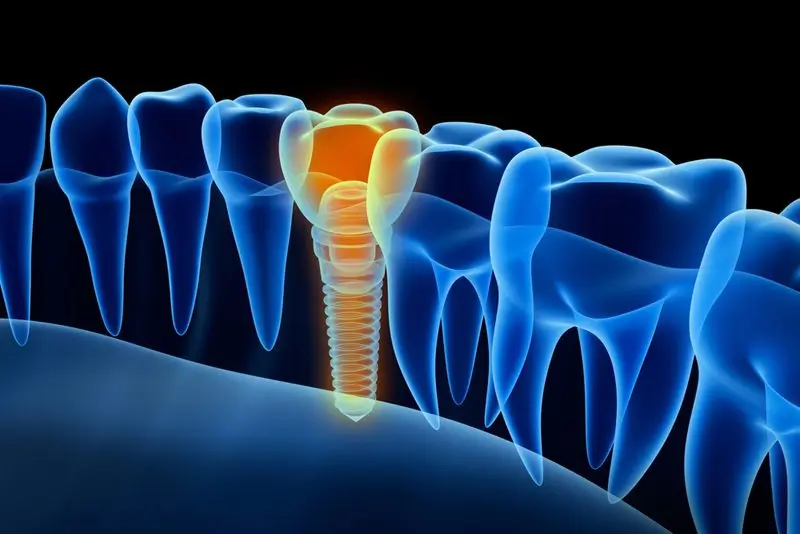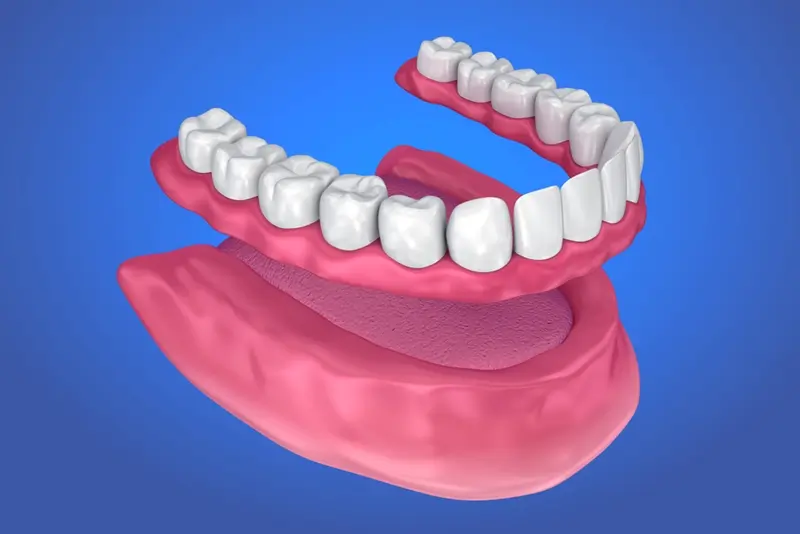Human teeth are extraordinarily resilient. Aside from the fact that they’re made up of four different types of tissue – pulp, dentin, cementum and enamel – roughly a third of each tooth is within your gums. This helps to keep your teeth firmly in place, ideally over the course of your entire life.
Strong as they may be, your teeth are not indestructible and for any number of reasons, can be jarred loose, leaving a space.
How should you fill it? There are several potential replacement solutions, each of which you should consider carefully with your dental health professional. We’ll go over a few them briefly here:
1. Crown
A crown is one of the more common replacements for missing teeth and is frequently used when the original tooth itself is intact but only partially. For instance, should you crack a tooth, a crown may be placed over the imperfection to hold it in place.
However, a crown isn’t necessarily conditional on at least a portion of the original tooth still being in place. If the tooth is gone completely, a crown can serve as a fitting replacement and helps to strengthen the surrounding teeth.
As for what materials crowns come in, the most common include porcelain (ceramic) porcelain-fused-to-metal and all metal.
2. Onlay
An onlay is very similar to a crown, but is typically used as an alternative in circumstances where the original tooth is still mostly intact. For example, if the very top of the tooth is damaged or missing, an onlay can fit around it.
Your dental health professional will be of great assistance when deciding between an onlay and crown. The condition of your teeth and the missing tooth in question will be among the determining factors.
 A dental implant is rooted deep within the gums.
A dental implant is rooted deep within the gums.3. Dental implant
Implants are appropriately described because they are physically implanted deep within the gums. Generally speaking, the process itself works in three parts. First a titanium screw is embedded into the jaw bone. Next, a post is inserted in the anchor to hold the artificial tooth firmly in place. Finally, the artificial tooth is securely attached to the post.
Because implants are made out of artificial material, some question their longevity. In other words, will they ever have to have a procedure done again? Rest assured that implants are built to last – lifetime at that. The world of cosmetic dentistry has improved drastically over the years, making implants not only more resilient, but much more natural-looking. It’s virtually impossible to distinguish an actual tooth from an implant because they function the same way.
4. Dental fillings
Sometimes it isn’t the tooth itself that is missing; the material placed inside the tooth from a different procedure has fallen out. Fillings are another word for cavities. Decay must be carefully removed to avoid adversely affecting the rest of the tooth and help improve functionality. But every now and then, the fillings used – usually dental amalgam – may not stay in place. There are any number of reasons why this may happen, such as biting into hard, sticky or chewy foods.
Fillings that fall out need replacement to keep the tooth intact and to reduce the pain that can accompany chewing on the problematic tooth. You may want to talk to your dental health professional about what material you should use for the filling, be it the same one you used originally or something different. Gold and silver fillings are reliable and adhere well.
 A dental bridge can restore your teeth if you have several adjacent ones missing.
A dental bridge can restore your teeth if you have several adjacent ones missing.5. Dental bridges
Suppose there isn’t one tooth missing from your smile, but several. This can happen frequently during collisions in close-contact sports like football, hockey or rugby.
A dental bridge may be the ideal solution to replace what fell out. A bridge accomplishes a few things, the main one being restoring your teeth to their former form. But a bridge can also prevent your teeth on the opposite side of your mouth from shifting, as they’re wont to do over time.
Additionally, a bridge can help you feel more confident about your smile by restoring it to as close to its previous condition as possible. They may not last as long as implants, but typically won’t require any significant treatment for at least 10 years, or maybe longer.
6. Veneers
Perhaps you have one or two teeth that look dramatically different from the rest, due to discolouration, crookedness or some other imperfection. In these instances, you may feel like might as well be missing, even if they actually aren’t. Veneers can get them looking like the rest of your teeth. A veneer is a thin piece of material placed on the tooth or teeth, shielding the problematic one from view. You may want to consider getting veneers for all your teeth, as they can make you look years younger.
If you want to get your teeth looking better than ever, City Dentists can help. Contact us today to schedule an appointment.
